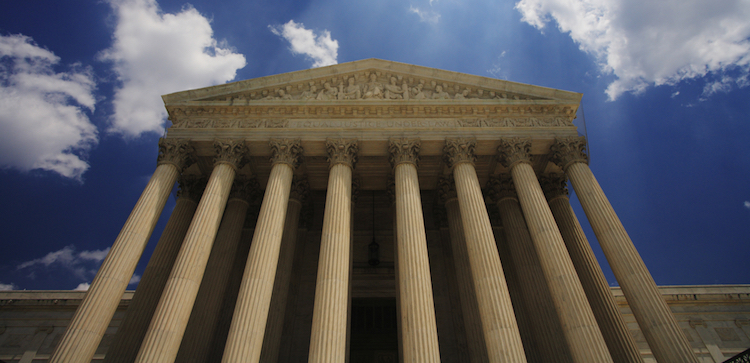State Justices, Legislators on Panel Shared Success Stories on Tackling Judiciary Budget Concerns
State chief justices and court administrators met this week in Washington, D.C., to discuss policy priorities for the upcoming year and beyond. Many of them took time Thursday to join in or attend a panel discussion concerning best practices and methods for dealing with severe budgeting constraints.
They heard plenty about making do with less at the gathering at the National Press Club, held in conjunction with board meetings of the Conference of Chief Justices and the Conference of State Court Administrators. The 12-member panel made up of chief justices, court administrators and a couple of state legislators was moderated by power lawyers Ted Olson and David Boies, who for the past two years have co-chaired the ABA Task Force on the Preservation of the Justice System.
The program in Washington highlighted efforts in four states—California, South Carolina, Utah and Vermont—for, as the conference title put it, “Surviving the Economic Tsunami in State Courts: How Fresh Ideas, New Solutions and Inter-branch Cooperation are Replacing ‘Business as Usual.’”
After four years of dramatic reductions in judiciary budgets and increased demand for court services, Delaware Supreme Court Chief Justice Myron Steele, a panel member and also president of the CCJ, told the gathering: “One thing we’ve learned—we cannot manage our way out of the crisis. Layoffs, furloughs, reduced operating hours and, in Delaware, voluntarily reduced judicial salaries are not going to fill the widening economic gap.”
Two major themes emerged from the various presentations by panelists. First, there are a lot of efficiencies to be gained, such as Utah’s courts now being entirely paperless on the civil side and on track to be wholly that way. Second, more control of court systems and budgeting concerns can be gained through ongoing, open discussions and collaboration with legislators—who often don’t understand the problems that justice itself faces in underfunded courts, but can become helpful when they do.
In Vermont, for example, Supreme Court Chief Justice Paul L. Reiber and others worked closely with Shapleigh “Shap” Smith, speaker of state’s House of Representatives, on creating a unified court system out of a balkanized one.
Reiber and Smith had long been friends as practicing lawyers in the small state. They were able to undo an arrangement in which certain jobs in the court system were created by statute by what appeared to be political favors. For example, one courthouse had a caseload that justified having a judge for one week per month, even though it had three full-time clerks.
“We would not have gotten done what we did without his involvement,” Reiber said of Smith. “He was a strong voice in support of amending the law in a way that would give us more control over allocating our resources.”
In Utah, the civil courts are now paperless and the entire system will be, said panelist Daniel Becker, Utah State Court Administrator. “We’re asking judges to go on the bench without files, (and with) only a computer.”
Panelist Eric Hutchings, a member of the Utah House of Representatives, says the court system became so candid and transparent with all its financial records and spending that it gained the legislature’s trust for when it makes budgetary requests.
“They shook up the courts like I’ve never seen any corporation, public or private organization anywhere shake it up,” said Hutchings, who also is a financial services professional. Court system leaders also discussed detailed guidance in a compendium developed by the National Center for State Courts for helping legislatures understand the unique budgeting problems facing courts. It is titled “Principles for Judicial Administration” (PDF).
Speaking last, panelist and former ABA president Wm. T. “Bill” Robinson III, who helped launch the ABA task force, notes that lawyers as officers of the court have an obligation to speak out for adequate court funding. Efficiencies and technology will help in the protracted budget crisis, he says.“But there’s an underlying need below which the courts simply cannot provide access to justice.”



